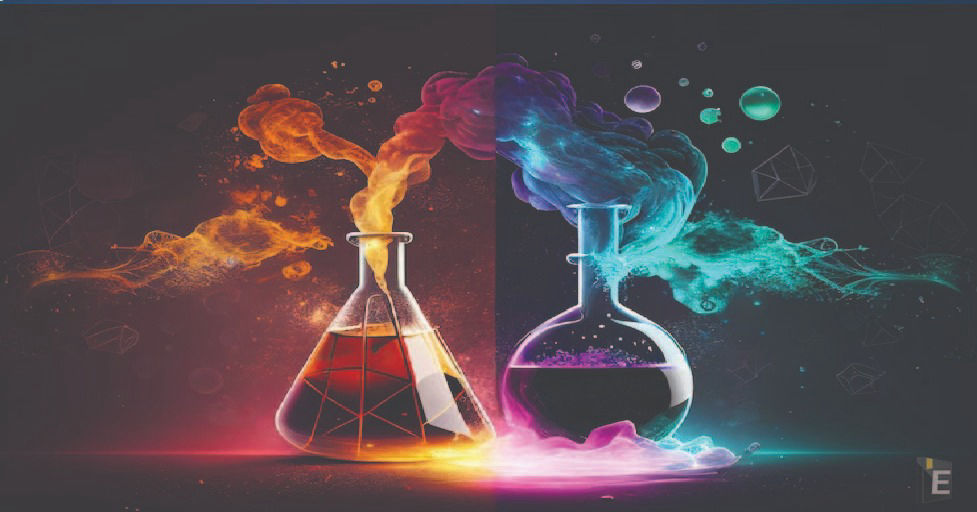Top 100 General Science Questions and Answers

Welcome to our comprehensive collection of the top 100 general science questions and answers! This article is designed to quench your curiosity and enhance your understanding of the fascinating world of science. Whether you're a student, an avid learner, or simply someone intrigued by the wonders of the natural world, this compilation will serve as a valuable resource to expand your scientific knowledge. Science encompasses a vast array of disciplines, including physics, chemistry, biology, astronomy, geology, and more. From the tiniest particles to the vastness of the universe, science offers insights into the mechanisms and phenomena that shape our world.
General Science Questions and Answers
In this article Top 100 General Science Questions and Answers, we have carefully curated a diverse selection of 100 questions that cover a wide range of scientific topics. These questions have been handpicked to provide a balanced mix of fundamental concepts, intriguing inquiries, and popular science queries. Each question is accompanied by a concise and informative answer, ensuring that you not only gain knowledge but also understand the underlying principles.
Also, Read Latest Current Affairs Questions 2023: Current Affairs Today
"Unlock your potential and score high with our General Knowledge Mock Test and Current Affairs Mock Test!"
Top 100 General Science Questions and Answers
Q : Nutritional care during illness is an organised group of activities which consists of all of the following, EXCEPT:
(A) assessing psychological stress
(B) assessing nutritional status
(C) planning and prioritising nutrition intervention(s) to meet nutritional needs
(D) diagnosis of nutritional problems
Correct Answer : A
Explanation :
The set of activities for nutritional care during illness includes which of the following points?
1. assessing nutritional status
2. planning and prioritising nutrition intervention(s) to meet nutritional needs
3. diagnosis of nutritional problems
Which are the smallest cells in the human body?
(A) Muscle cells
(B) Nerve cells
(C) Sperm cells
(D) Brain Stem cells
Correct Answer : C
Explanation :
The sperm cell is the smallest cell in the human body. The volume of these cells is quite tiny. The head of a sperm cell is roughly 4 micrometres long, about the same size as a red blood cell (RBCs). Egg cells are the biggest cells in the human body (ovum).
Which is a major essential lipophilic (fat-soluble) vitamin required for the protection of cell membranes and the formation of red blood cells (RBCs)?
(A) Vitamin A
(B) Vitamin C
(C) Vitamin D
(D) Vitamin E
Correct Answer : D
Explanation :
Vitamins A, D, E, and K are called the fat-soluble vitamins, because they are soluble in organic solvents and are absorbed and transported in a manner similar to that of fats. Vitamin E deficiency, which is rare and usually due to an underlying problem with digesting dietary fat rather than from a diet low in vitamin E, can cause nerve problems.
In which year did Rudolf Virchow published an essay titled ‘Cellular Pathology’ in which he famously declared that "every cell arises from another cell”?
(A) 1865
(B) 1835
(C) 1845
(D) 1855
Correct Answer : D
Explanation :
n 1855, at the age of 34, he published his now famous aphorism “omnis cellula e cellula” (“every cell stems from another cell”). With this approach Virchow launched the field of cellular pathology. He stated that all diseases involve changes in normal cells, that is, all pathology ultimately is cellular pathology.
In 1928, who discovered that when a ray of coloured light enters a liquid, a fraction of the light scattered by that liquid is of a different colour?
(A) SN Bose
(B) Lord Rayleigh
(C) CV Raman
(D) John Tyndall
Correct Answer : C
Explanation :
Sir Chandrasekhara Venkata Raman, discovered on 28 February 1928, that when a beam of coloured light entered a liquid, a fraction of the light scattered was of a different color, dependent on material property. This radiation effect of molecular scattering of light bears the name of ‘Raman Effect’, from which many applications in photonic communications and spectroscopy evolved. The Raman Effect is the process of scattering light particles by molecules of a medium.
Which of the following glands/organs in human body secretes bile juice?
(A) Pancreas
(B) Liver
(C) Pituitary
(D) Pineal
Correct Answer : B
Explanation :
Bile juice is produced by the liver and stored in the gallbladder, which is a small organ located beneath the liver. When needed, bile is released from the gallbladder into the small intestine to aid in the digestion and absorption of fats and fat-soluble vitamins. So, the correct answer is the liver secretes bile juice, and it is stored in the gallbladder before being released into the small intestine.
Which country has got its first female Prime Minister?
(A) Somalia
(B) UAE
(C) Sri Lanka
(D) Chad
Correct Answer : C
The junction between the axon of one neuron and the dendrite of the next is called
(A) A joint
(B) A synapse
(C) Constant bridge
(D) Junction point
Correct Answer : B
Explanation :
The junction between the axon of one neuron and the dendrite (or cell body) of the next neuron is called a synapse. At the synapse, electrical or chemical signals are transmitted from one neuron to another or to an effector cell, such as a muscle cell or gland cell. Synapses play a crucial role in the transmission of nerve impulses within the nervous system.
K in K = Cα2/1 – ɑ represents ___________
(A) Dissociation constant
(B) Molar concentration
(C) Degree of dissociation degree of ionization
(D) Degree of ionization
Correct Answer : A
In which direction does the rainbow always form?
(A) in front of the sun
(B) on the opposite side of the sun
(C) in the north direction
(D) None of these
Correct Answer : B



